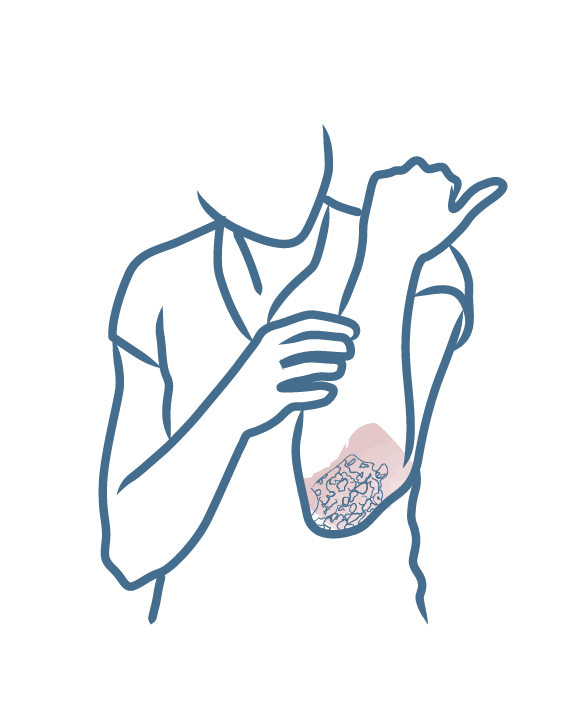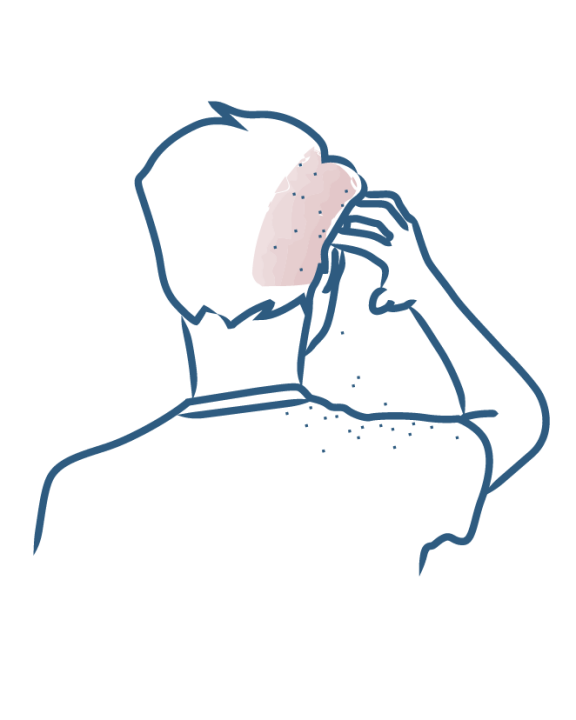Areas affected by psoriasis

Scalp psoriasis
Scalp psoriasis is extremely common, affecting between 50 and 80% of people with psoriasis.
A physical, psychological and social discomfort
Scalp psoriasis occurs in isolation, but is more commonly associated with psoriasis in other locations: the knees, elbows, face, nails, etc.
The scalp can be affected by psoriasis in different ways: on the hairline or in the middle of the hair, potentially spreading to the neck and/or the forehead, behind the ears, or it can cover the whole head forming the shape of a helmet. Like a kind of "armor" that patients could do without!
If the lesions are not hidden by the patient's hair, it is possible to see that they are very similar to conventional psoriasis plaques (vulgar psoriasis or plaque psoriasis) in appearance. They are red, thick, covered with scales, and they are itchy.
It is really hard to cope with other people staring when all you want to do is scratch your scalp (sometimes until it bleeds) in a desperate bid for relief, but the scratching makes the scales fall onto your clothes which is not an attractive look. Scalp psoriasis has a physical, psychological and social impact. Scratching your head is never looked upon kindly by other people. In their eyes, it is often attributed to a lack of hygiene or a lice infestation. Few people put it down to scalp psoriasis.
Does scalp psoriasis cause hair loss?
The good news is that scalp psoriasis does not cause hair loss. The hair passes through the scales so they do not prevent hair growth. Moreover, when you scratch a psoriasis lesion on the scalp, the scales fall off but they do not take the hair with them!
On the other hand, the scalp is often very irritated, and the hair more fragile, hence the need to be gentle when taking care of it.
More information
- Discover Psoriasis on the back and buttocks
Areas affected by psoriasis
Psoriasis on the back and buttocks
- Discover Ear psoriasis
Areas affected by psoriasis
Ear psoriasis
- Discover Genital psoriasis
Areas affected by psoriasis
Genital psoriasis
- Discover Psoriasis on the elbows and knees
Areas affected by psoriasis
Psoriasis on the elbows and knees
- Discover Palmoplantar psoriasis
Areas affected by psoriasis
Palmoplantar psoriasis
- Discover Psoriasis on the face
Areas affected by psoriasis
Psoriasis on the face
Our care routines
Psoriasis-prone skin
Dermatological expertise
To better understand your skin and hair, discover our exclusive content and innovative care products designed to improve your quality of life..


